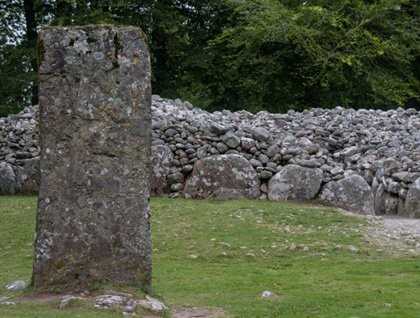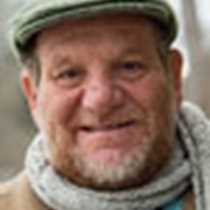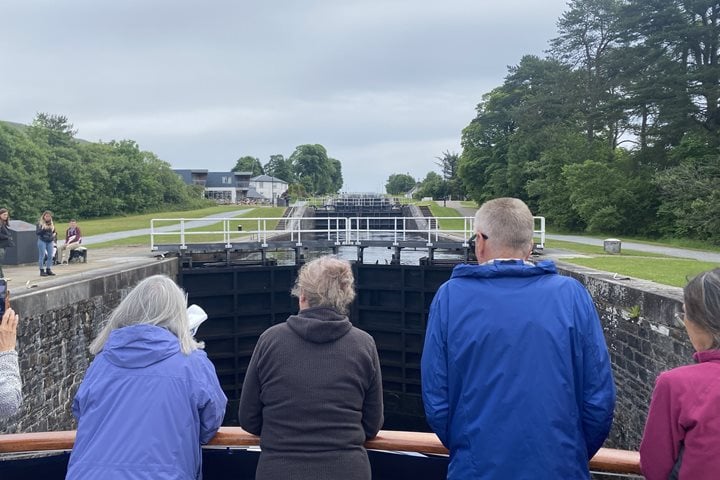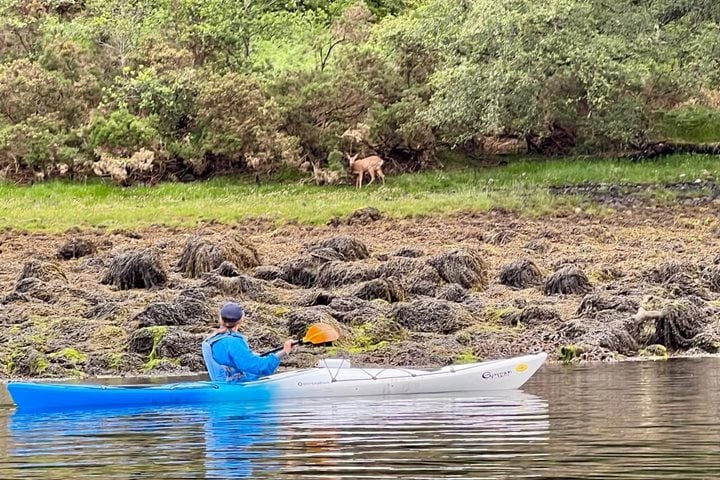Upon awaking we found ourselves in the mists of a soft rain gently falling around us. It was however, fitting weather for the morning outings for today, a visit to the Culloden where on April 16, 1746 the Jacobite forces fighting for “Bonnie Prince Charlie” In their attempt to restore the Stuarts to the throne, were crushed in a horrific defeat. In less than an hour, hundreds of men loyal to the Stuart’s lost their lives to a bloody massacre that earned the British commander the nickname “Butcher”. It is a solemn place, and the outstanding museum gives a detailed account of this historic battle. In one room, you are surrounded by screens that show a movie enactment of the bloody battle, making you feel as though you were there on the battle ground, experiencing the slaughter. The battlefield itself is now only a large field, where red flags mark British soldiers positions, and blue mark the lines of the doomed Jacobites. As you walk the landscape now covered with heather, thistle, and other wildflowers, you can hardly help but wonder about the carnage that took place here so long ago.
After our visit to Culloden, we set off for the Clava Cairns, which are the remains of three burial chambers surrounded by standing stones that date back to the Early Bronze Age, 2,000 - 1,500 B.C. Little is known about the people who constructed these monuments to the dead, but they are a people of long ago, with little technology other than the simple tools of the early bronze age. Much speculation is made about who they were, it is hard not to offer our own ideas about the why’s and who’s about who made these astronomically correct stone structures.
It was then back to the ship for lunch and sailing through one of the icons of Scotland, Loch Ness. Spanning some 23 miles and having a depth of more than 1,000 feet, the loch contains more water than in all of the lakes and reservoirs in England and Wales combined. As we pass Castle Urquhart, its haunting remains are the site of the very first sighting of Nessie, the supposed sea creature who gets it name from the lake. Unfortunately, we have no sightings of the great beast today, but we will keep looking, just in case.
As the afternoon is coming to an end, we sail into our first loch at Fort Augustus. Fort Augustus is a small village at the south end of Loch Ness. The fort was built to serve as the hub for English general George Wade’s network of roads, and bridges, designed to subdue the Jacobites and keep order in the highlands. For us, it serves as a our overnight mooring where some of us take part in a hike around the grounds, and others take to the water once more, this time in kayaks for a more personal way to experience the waterway.







